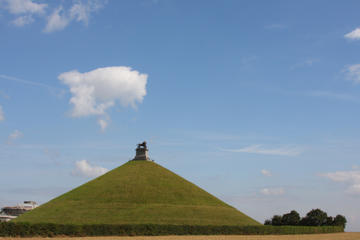Waterloo Battlefield
TIME : 2016/2/22 9:56:25

Waterloo Battlefield
As the setting of one of the most illustrious battles in military history, Waterloo Battlefield requires very little presentation. The ultimate defeat of Napoleon and the French army, the glorious win of the Seventh Coalition; the Battle of Waterloo was somewhat short-lived in comparison to others but its length is in no way correlated to its significance.
Napoleon had been exiled to Elba by the Treaty of Fontainebleau in 1814; worried about his wife and son who had returned to Austria and concerned he would be banished to a remote island, he escaped and started governing again despite international threats. His return to power in March 1815 was a pacifist one, but his enemies did not believe in his noble intentions for one minute; a pan-European coalition emerged at the Congress of Vienna (the precursor of the United Nations), which aimed to provide long-term peace on the continent by settling critical issues surfacing from the Napoleonic Wars and balancing the powers; many European Great Powers refused to recognize Napoleon as Emperor of the French upon his return from exile. The Seventh Coalition mobilized large armies led by the Duke of Wellington and Prussian-born Gebhard von Blücher; they gathered at the northeastern border of France and prepared for battle. Napoleon’s strategy was to isolate the two armies and obliterate each one separately in order to avoid the invasion of France, but the French army was soon routed out - effectively ending Napoleon's rule as Emperor of the French.
Practical Info
Waterloo Battlefield is located 30 kilometers south of Brussels in Belgium. It can be reached by car via routes RD and junction 26 in 30 minutes. Entry costs €13.50 per adult, €11 per student and €8 for children aged 7-17. The battlefield is open every day from 9:30 a.m. to 6:30 p.m. between April and September, and from 10 a.m. to 5 p.m. between October and March, with the last admission 30 minutes before the battlefield closes.
